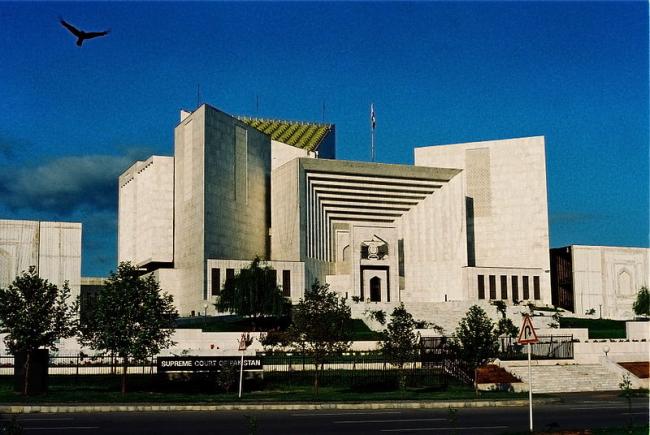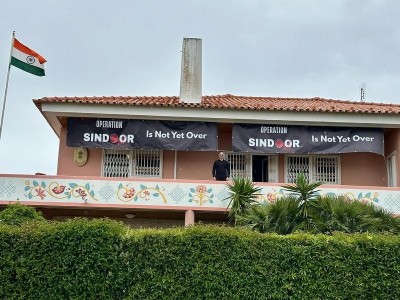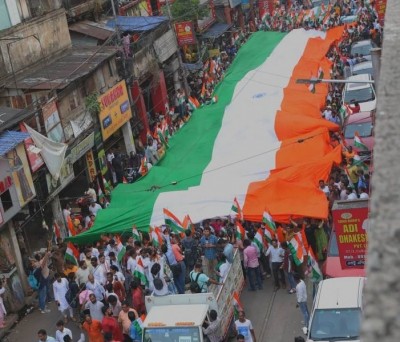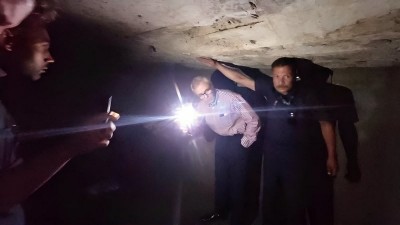
Sindh: Fragile Peace
The Press Release also revealed that Baba Ladla had, with the help of Peoples' Aman Committee [a militant group tied to the Pakistan People's Party (PPP)] chief Uzair Baloch, committed the murders of Shera Pathan, Arshad Pappu and Yasir Arafat, rival Lyari gangsters allegedly patronized by the Muttahida Qaumi Movement (MQM)]. It also stated that, in March 2013, Baba Ladla had abducted a group of Muhajirs and murdered them. Of the other gangster gunned down in the operation, Sikander was wanted in more than 15 crimes, and was described as a close aide of Baba Ladla and also his facilitator. In April 2012, Sikander had committed the murder of Station House Officer (SHO) Fawad Khan while in the same year he had also killed Constable Asif. In 2013, Sikandar had tortured and subsequently killed two other men. He had also been involved in the sale and purchase of illegal weapons.
On January 28, 2017, Police shot dead a Lyari gangster, identified as Irfan Pathan, who was wanted in more than 100 target killing cases, including murders of political workers and rivals, in Singo Lane of the Chakiwara area in Lyari Town. Officials said Irfan Pathan was a 'shooter' of the Faisal Pathan group of the Uzair Baloch gang, and he was also involved in multiple rape cases and had abducted several women from the area. Four other gangsters, identified as Rehan Pathan, Yousuf Pathan, Ismail and Ehsan Lala, managed to escape under the cover of fire. A cache of arms and ammunition were recovered from their hideout, including 301 grenades of different types, four .303-rifles, four SMGs, two G-3 rifles, one 9mm pistol, one 30-bore pistol, one 22-bore pistol, one 32-bore pistol, one LMG, one 12-bore repeater, two 30-bore mini-Kalashnikovs, four jackets, two telescopes, one gas mask and a huge quantity of ammunition.
On January 12, 2017, three gangsters were killed in an intelligence-driven targeted raid by Rangers personnel in the Yousaf Goth locality of Gadap Town in Karachi. One accomplice managed to escape, while a heavy cache of automatic weapons & ammunition was recovered.
Another notorious gangster, Bilal aka Bhaiyya, who carried a reward of PKR 1.5 million, was killed in a Police shootout in the Gao Godam area of Lyari Town in Karachi on December 7, 2015. Bilal, who was affiliated with the Uzair Baloch gang, was wanted in at least 100 criminal cases, including 50 murders, according to Deputy Superintendent of Police (DSP) Zahid Hussain. Three of Bilal's associates, Mullah Sohail, Yousuf Pathan and Rehan Pathan, managed to flee from the spot during the operation.
After Bada Ladla's killing, Muhammad Saeed, Director General (DG) Rangers, visited different parts of Lyari on February 4, 2017. In a briefing on the security situation, he said peace would be established in every part of Karachi. Terrorist elements and their aiders and abettors would be strictly dealt with and no successors of Baba Ladla would be allowed to raise their heads.
Due to the Rangers Operation, Karachi, the commercial capital of the country, had witnessed a seven-year low in terrorism related violence. The Sindh Rangers were called in on September 4, 2013, when violence in the city was at a peak, with 1,668 fatalities. According to South Asia Terrorism Portal (SATP) data, the violence in the Province has dropped to its lowest since 2010. Sindh recorded 271 fatalities, including 76 civilians, 24 SF personnel and 171 terrorists in 2016, in comparison to 718 such fatalities in 2015, including 350 civilians, 58 SF personnel and 310 terrorists. While the overall fatalities recorded a 62.25 per cent decrease in 2016 in comparison to previous year, civilian, SF and terrorist/organised crime categories had seen a 78.28, 58.62 and 44.83 per cent decline, respectively.
The annual report of the Sindh Police released on December 27, 2016, disclosed that there was a 32.93 percent decline in killings in 2016, when 666 persons were killed, as compared to 2015, which saw 993 fatalities. According to the data, incidents of targeted killing also decreased by 71.69 per cent, with 45 persons shot dead in 2016, as compared to 159 in the previous year. Karachi also witnessed a sharp decline in incidents of terrorism, kidnappings for ransom and extortion by 60, 57 and 34 percents respectively in 2016, only two incidents of terrorism were reported in the outgoing year as compared to the previous year, incidents of kidnappings for ransom dropped to 21 from 49 in 2015, and 146 cases of extortion were reported as compared to 224 in the previous year. The Police report claimed that the number of target killings had reduced because of the 'good performance' of the Police, but did not mention the achievements of the Sindh Rangers' Karachi operations that have been ongoing for the past three years.
Meanwhile, a Sindh Rangers report issued on December 29, 2016, claimed that a total of 446 'target killers' had been arrested in 2016, most of them belonging to the 'militant wings' of different political groups. According to the report, which focused on the ongoing Karachi operation, Sindh Rangers conducted 1,992 operations across the city over the year, during which more than 2,847 suspected criminals were taken into custody. A break-up of the numbers shows that of the 446 target killers arrested by the Rangers, 348 belonged to various political groups, 87 had links to Lyari gangs, while 11 were affiliated with different sectarian groups. In the report, the Rangers also claimed that murders and targeted killings in the city hit an all-time low in the year, with 87 people falling victim, compared to 199 in the preceding year. The report added that at least 1,845 arms, including machine guns, light machine guns, sub-machine guns, rocket launchers, detonators, pistols/revolvers and explosives, had been confiscated during the year. A total of 194,579 rounds of ammunition of different calibres were also recovered.
The number of major incidents (each involving three or more fatalities) decreased by 43.33 per cent in 2016 in comparison to the previous year. Sindh accounted for 34 major incidents of violence, resulting in 134 deaths in 2016, as against 60 such incidents, accounting for 295 fatalities in 2015.
There was also a considerable decrease in the number of explosion-related incidents in 2016. In comparison to 26 blasts resulting in 102 fatalities and 202 injured in 2015, 2016 recorded 19 blasts resulting in just three fatalities and 64 injured. Similarly, there was just one suicide attack of sectarian nature in which at least 13 persons, including five Policemen, were injured, as Police foiled two separate suicide blasts during Eid prayers in the Khanpur tehsil of Shikarpur District in Sindh. There was also relative calm in the Province from the perspective of sectarian violence. While the number of incidents of sectarian violence decreased from 30 in 2015 to 19 in 2016, the resultant deaths came down from 164 in 2015 to 25 in 2016 - a 84.75 per cent decline.
Despite the law-enforcement agencies' crackdown on the Lashkar-e-Jhangvi (LeJ) in Sindh and the killing of its key leaders, the outfit still managed to carry out 17 attacks through 2016, 10 of them in Karachi alone. The Islamabad based security think-tank Pak Institute of Peace Studies (PIPS) claimed, in a report, that 10 people were killed and another 30 injured in the 10 attacks carried out by the LeJ in Karachi in 2016. Muhammad Amir Rana, PIPS Director, asserted that the terror group was trying to fill the void created by the elimination of its main leaders and weakening infrastructure. The operational capacity of this terrorist formation was eroded further in 2016, as compared to 2015, with the arrest of LeJ Sindh chief Naeem Bukhari akaAtta-ur-Rehman.
Conventional crimes, however, remain on the rise. Citizens-Police Liaison Committee (CPLC) crime statistics indicate a proportional increase in conventional crimes, such as robberies, car snatching, thefts and mobile snatching, by 24 per cent. According to CPLC data, till mid-December 2016, 14,974 people had been deprived of their mobile phones at gunpoint, while 17,790 mobile phones were stolen. On average, around 15 vehicles were snatched per month, the highest in November, when 23 vehicles were reportedly stolen. Through 2016, nearly 1,500 cars were stolen, 2,342 motorcycles were snatched, and another 21,028 motorcycles were stolen.
In its January 9, 2017 report, CPLC identified sixty 'hot spots' in Karachi, where street gangs operate and most incidents of snatchings take place. These areas included PIDC, Tariq Road, Sakhi Hassan, Hassan Square, Bahadurabad, Aisha Manzil and the NIPA Chowrangi which are high-risk areas, and even some areas in the city's posh localities, such as Defence and Clifton, make it to the list. All this, even after more than three years of the Karachi Operations, which claimed great success according to the Rangers and Provincial Government.
Almost 75 per cent of militants on the terrorism watch list for their alleged links with over a dozen proscribed organisations remain untraceable in Karachi, according to official documents. The Sindh counterterrorism forces were unable to trace 142 of a total of 190 terrorists, who were listed in 'category A', a term used for terrorists put on exceptional risk or high risk. Six most wanted terrorists belonging to proscribed organizations had shifted to Holland, Bangladesh, Dubai, Ethiopia, United Arab Emirates and Afghanistan, official documents said. Interviews with police officers and documents prepared by Sindh counterterrorism forces further revealed that "there is a strong possibility that some of these militants must have planned to execute recent terror attacks in Karachi."
Despite of geo-tagging of 7,724 madrassas completed on September 4, 2016, around 93 madrassas in Sindh continue to have solid links with terrorist or banned outfits, and intelligence agencies have credible information about the activities taking place there. Under the NAP, geo-tagging of 7,724 madrassas had been completed by the Sindh Special Branch and the IT Branch, helping security agencies define their exact location and to maintain a strict watch on them. Of this total, 3,110 were located in Karachi, 1,290 in Hyderabad, 750 in Mirpurkhas, 1,536 in Sukkur and 1,037 in Larkana Division. Sources indicated that there were 10,030 madrassas in Sindh, of which 2,309 madrassas had been sealed under different charges, while 1,184 were yet to be registered.
On August 11, 2016, the Supreme Court assailed the Sindh Government for not taking proper steps to ensure maintenance of law and order in the provincial capital. During the proceedings of the 'Karachi law and order case', Chief Justice Asif Saeed Khan Khosa inquired about the status of CCTV cameras to be placed at different locations in the city. The Chief Secretary replied that an amount of rupees ten billion had been allocated for new CCTV cameras. The Court responded, "The issue is not allocating funds but also spending them where they are required to be spent. We want full implementation on the orders of the Karachi law and order case."
While Sindh in general and Karachi in particular have seen a ray of relative light after years of darkness, a confrontation between the Federal and Provincial Governments regarding Policing power has undermined operational effectiveness. In particular, the Provincial Government had questioned the 'targeted operations' by the Rangers, which is a Federal Security Force. In every 90 days, the rangers needed Provincial Government's validation for further continuation. The clash between two different political parties, PML-Nawaz at the centre and Pakistan People's Party in the Province, threatens the future successes against the terrorism-crime nexus in Sindh.
Image: Wikimedia Commons
Support Our Journalism
We cannot do without you.. your contribution supports unbiased journalism
IBNS is not driven by any ism- not wokeism, not racism, not skewed secularism, not hyper right-wing or left liberal ideals, nor by any hardline religious beliefs or hyper nationalism. We want to serve you good old objective news, as they are. We do not judge or preach. We let people decide for themselves. We only try to present factual and well-sourced news.







